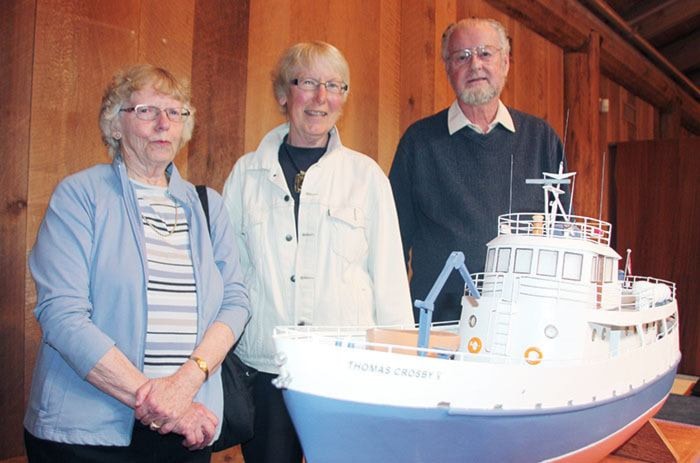For more than 20 years the Thomas Crosby V spread the word of God to people living in isolated communities along the North Coast, also providing church services and much-needed human contact to those living far away from civilization.
The history and contributions of the United Church missionary ship were acknowledged at an intimate ceremony last week, when a handcrafted model of the Thomas Crosby V was donated to the Museum of Northern British Columbia.
“I’ve been working on it off and on for 40 years,” said its creator Bob Scales, a retired United Church minister who became involved with mission ships in 1957.
Throughout the years he spent at sea, Scales was the skip of the Thomas Crosby IV and worked as mate of the V for one year in the early ‘80s.
“It was based in Prince Rupert, so a logical place for it is Prince Rupert,” he said.
Prince Rupert’s Jane Nicholls was impressed with the model’s accuracy. And she’s knows from her time as shore contact for the Thomas Crosby V in the late 1970s and early ‘80s,
“I was the first one to meet them and the last one to see them go,” she explained.
The last in a series of mission ships named after Rev. Thomas Crosby, a Methodist missionary who worked in coastal communities including Lax Kw’alaams, the Thomas Crosby V was put into service in Prince Rupert in 1967 and visited lighthouse keepers and remote communities up and down the Inside Passage until the early ‘90s.
Each month the ship set off from Prince Rupert stopping in remote communities where people awaited medical treatment from the ship’s nurse, medical transportation if required, wedding, baptism and burial services from its minister, reading material from its library and whatever else it could. Nicholls said whatever the church offered in town could be provided to people living in the remote coastal areas by the Thomas Crosby V.
“We did a little bit of whatever was needed ... with so few people, you just kept doing what you could,” said Nicholls, adding for many the most important thing was communication and human contact.
“For some of the people in places along the coast it was their only contact for months on end, particularly in the winter.”
The Thomas Crosby V model is a welcomed addition to the museum’s exhibit, where it will remain.
“The very generous gift will bring back memories to many and provide for others a look into a part of our North Coast past,” said Heather Mclean, a directors for the Museum of Northern British Columbia.
